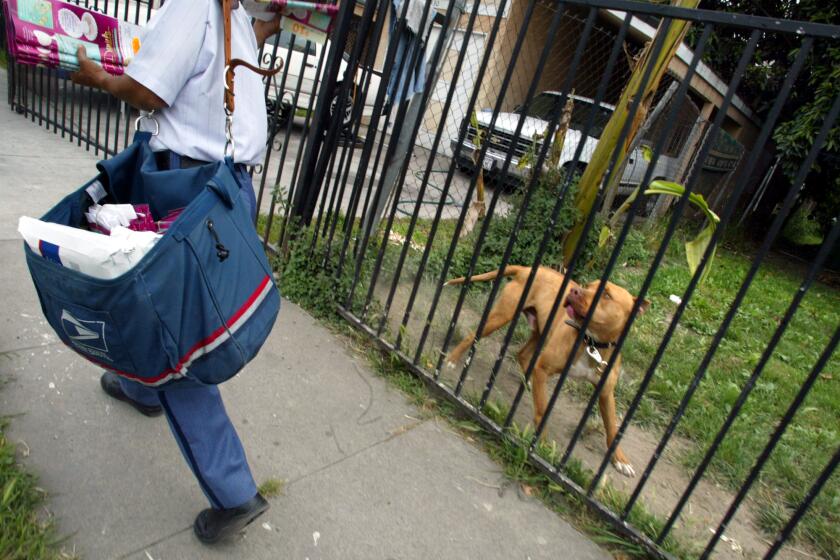10 Tips to Ease Your Pet’s Next Flight
- Share via
If you’re shipping any animal, whether by air cargo, excess baggage or carry-on luggage, here are some tips to make the trip easier:
1. Check with the individual airline for its rules on shipping animals. Some do not take animals, and animals are not to be shipped if the outside temperature is above or below certain levels. When making your reservation, let the airline know you’ll be traveling with an animal.
2. If you plan to take your pet as carry-on luggage, it must be small enough to fit in a kennel that can be stowed under the seat. Also, only one pet per cabin is allowed, so be sure the airline knows you plan to carry it on board.
3. Health certificates are required when shipping animals inter-state and internationally. When flying either to Hawaii or to another country, make sure you check for specific health restrictions as well as quarantine laws.
4. The kennel the animal travels in must meet USDA standards. It must be large enough for the animal to stand up and move around in and there must be adequate ventilation. Shipping instructions must be listed on the outside of the kennel, along with information about feeding and watering the pet, even if it is not to be fed or watered.
The kennel also must be labeled “Live Animal” in at least one inch-high letters, with arrows showing which side should be up. It must also have at least a 3/4-inch rim around the side to make sure the air holes are not covered if the cage is pressed against other boxes. Most airlines sell USDA-approved kennels, as do pet stores.
5. There is a limit of two animals in the same kennel, but it is usually recommended only for young animals (and only animals over 8 weeks old can be shipped). Older animals may fight.
6. Most veterinarians recommend exercising the pet before placing it in the kennel. Do not feed it for six to eight hours before the flight. It’s a good idea to get the animal used to the cage before shipping it.
7. Do not put the animal’s leash in the cage. It could fall out and get tangled, strangling the animal.
8. Check with your vet to see if your animal should be tranquilized before the flight. “A tranquilizer can have variable effects,” said Jon Bernstein, an Inglewood-based veterinarian. “I generally advise against it, because I don’t think it solves the problem. Often the animal is fearful, and with a tranquilizer it still may be fearful but not have all its motor control. Tranquilizers also changes the body’s ability to regulate its temperature, which is important when traveling. The exception is if the animal is frantic and will do itself bodily harm trying to get out of the cage.” He added: “The overall health of the animal should determine whether or not it should fly, not the age. Primarily we look at the cardio-pulminary function.”
It’s been found that certain kinds of animals, especially pug-nosed dogs, do not fly well because of breathing difficulties. Check with your veterinarian.
9. Arrive at the airport well in advance of your flight. For domestic flights, most airlines suggest getting there an hour before take-off; for international flights, an hour and a half.
10.Airline personnel can refuse to take any animal once it is at the airport if they deem the cageunsafe or the animal unhealthy. That goes for shipping the animal as excess baggage, as carry-on luggage or as air cargo.
More to Read
Sign up for The Wild
We’ll help you find the best places to hike, bike and run, as well as the perfect silent spots for meditation and yoga.
You may occasionally receive promotional content from the Los Angeles Times.






